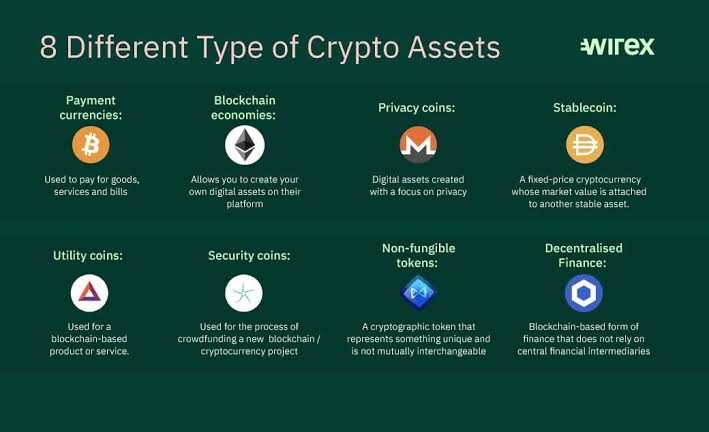Cryptocurrency: All You Need to Know
Cryptocurrency is a form of digital or virtual currency that uses cryptography for security, making it nearly impossible to counterfeit or double-spend. Unlike traditional currencies issued by governments (known as fiat currencies), cryptocurrencies operate on decentralized networks based on blockchain technology—a distributed ledger that records all transactions across a network of computers. This decentralization is one of the key features that set cryptocurrencies apart from conventional money, as it removes the need for a central authority, such as a bank or government, to manage and verify transactions.

Origins of Cryptocurrency The concept of cryptocurrency dates back to the late 20th century, but it wasn’t until the creation of Bitcoin in 2009 that the idea gained significant traction. Bitcoin was developed by an anonymous individual or group of individuals under the pseudonym Satoshi Nakamoto. Nakamoto’s vision was to create a “peer-to-peer electronic cash system” that would allow online payments to be sent directly from one party to another without going through a financial institution.
Bitcoin’s release introduced the world to blockchain technology, the foundation upon which most cryptocurrencies are built. Blockchain is a decentralized, distributed ledger that records transactions across many computers so that the record cannot be altered retroactively. This ensures the security and integrity of data in the blockchain, making it tamper-proof.
How Cryptocurrency Works Cryptocurrencies are typically built on blockchain technology, which operates as a public ledger of all transactions. Each transaction made with a cryptocurrency is recorded in a block, and once a block is filled with transactions, it is added to the chain, hence the name blockchain. This chain of blocks is shared across the entire network of computers, known as nodes, that participate in the blockchain.

The process of adding a transaction to the blockchain is known as mining in the context of Bitcoin and some other cryptocurrencies. Mining involves solving complex mathematical puzzles, and the first miner to solve the puzzle gets to add the block to the blockchain and is rewarded with a certain amount of cryptocurrency. This process not only adds new transactions to the blockchain but also introduces new units of cryptocurrency into the system.
Types of Cryptocurrencies While Bitcoin is the most well-known cryptocurrency, there are thousands of other cryptocurrencies in existence today, each with its unique features and uses. Some of the most notable ones include:

Ethereum (ETH): Launched in 2015, Ethereum is more than just a cryptocurrency. It is a decentralized platform that allows developers to build and deploy smart contracts and decentralized applications (DApps) without any downtime, fraud, control, or interference from a third party.
Ripple (XRP): Unlike Bitcoin, which is designed to be a decentralized digital currency, Ripple is both a platform and a currency. Ripple’s platform is designed to facilitate fast, low-cost international money transfers.
Litecoin (LTC): Often referred to as the silver to Bitcoin’s gold, Litecoin was created in 2011 by Charlie Lee, a former Google engineer. It offers faster transaction times and a different hashing algorithm than Bitcoin.
Tether (USDT): Tether is an example of a stablecoin, a type of cryptocurrency that is pegged to a reserve asset, like the US dollar. This helps stabilize the price and makes it a popular choice for traders looking to avoid the volatility commonly associated with other cryptocurrencies
Advantages and Disadvantages Cryptocurrencies offer several advantages over traditional financial systems. They allow for fast and low-cost transactions, especially for cross-border payments, which can be slow and expensive with conventional banks. Cryptocurrencies also provide financial services to people who do not have access to traditional banking, a significant advantage in developing countries.
However, cryptocurrencies also have their drawbacks. The most significant concern is their volatility. Prices can swing dramatically over short periods, making them a risky investment. Additionally, because cryptocurrencies operate in a largely unregulated space, they are sometimes associated with illegal activities, such as money laundering and the purchase of illicit goods.
The Future of Cryptocurrency The future of cryptocurrency is uncertain, but its potential is enormous. Many experts believe that cryptocurrencies and blockchain technology could revolutionize the financial industry, reducing the need for intermediaries, lowering transaction costs, and increasing transparency. However, for cryptocurrencies to achieve mainstream adoption, significant challenges need to be addressed, including regulatory issues, security concerns, and the need for broader public understanding.
In conclusion, cryptocurrency represents a significant shift in how we think about money and finance. Its decentralized nature, combined with the potential for lower costs and increased accessibility, makes it an exciting area of innovation. However, like any emerging technology, it comes with risks and challenges that need to be carefully managed as it continues to develop.

Get involved!
Comments